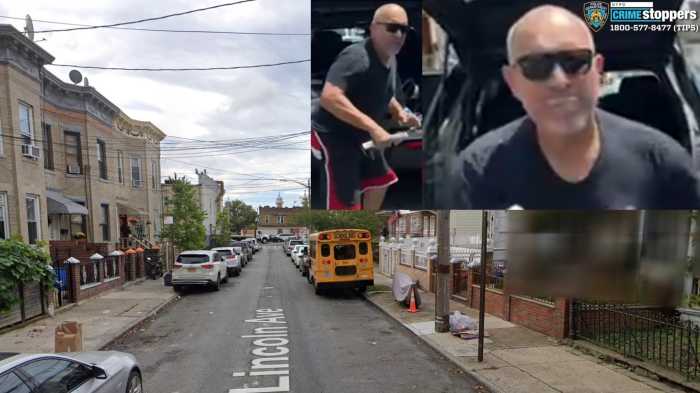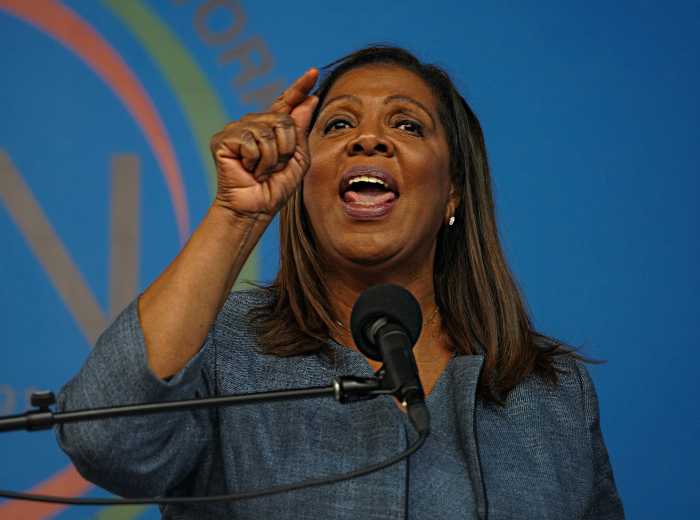In the aftermath of Harvey, survivors must cope with unimaginable devastation and an uncertain future. That’s where Lt. George Diaz and his team of current and former FDNY members come in.
Diaz, 60, of the Bronx, and 10 other men with the Red Cross’ Disaster Assistance Response Team have been working 12-hour shifts since arriving in Texas from New York on Sunday, mostly helping Harvey evacuees at the George R. Brown Convention Center in Houston.
“It was chaos,” Diaz said. “Once we got there, 5,000 people quickly grew to 10,000.”
The team wasted no time in getting down to work, helping to organize everything from incoming donations to where displaced people should go when they first arrive.
“Once [rescuers] got them out of their homes, they had to take them from dry land to a place where they are safe,” Diaz said. “It’s one thing to get them out, but then the real stress begins.”
Diaz, a 32-year FDNY veteran stationed with Ladder 50 in Throggs Neck, has been a member of the DART program since its inception after Hurricane Hugo hit Puerto Rico in 1989. He uses more than 25 years’ worth of real-life experiences in responding to disasters across the country, including Katrina and superstorm Sandy, to help relate to Harvey victims who have lost everything.
“I’ve been there and trust me, there is a tomorrow,” Diaz said he tells the survivors. “We bounced back after the World Trade Center [attacks] and Sandy. We bounced back after Katrina … I know this looks like the end, but it’s not.”
Experienced in detecting mental health issues, Diaz said he and his team watch for signs that people are ready to give up.
“They need mental help, they need medications that got washed away, they need food, they need to be able to sleep,” he said. “They need someone to let them know that it’s going to be OK. That’s what people need, a lifeline, anyone to hold on to.”
Harvey was the most powerful storm to hit Texas in more than 50 years. Since it made landfall as a Category 4 storm on Friday, Harvey has killed at least 35 people and forced more than 30,000 to seek help at emergency shelters. The death toll is likely to rise, officials said.
Damage has been estimated at tens of billions of dollars. As of Wednesday morning, Texas officials said close to 49,000 homes had suffered flood damage, with more than 1,000 destroyed.
The convention center was planned to house 5,000, operating with the help of American Red Cross volunteers, like Diaz, and others. The center’s population quickly grew to double that capacity, as people streamed in from areas south and west of Houston.
To cope with the mass of people, officials opened two more “mega” centers late Tuesday at the Toyota Center, home of the National Basketball Association’s Houston Rockets, and NRG Park, part of the complex that hosted the 2017 Super Bowl.
The population at the convention center dropped to about 8,000 Wednesday, as the other centers opened and some evacuees moved on, officials said. A long-term solution for evacuees has yet to be formulated.
Still 3,000 people over the center’s anticipated capacity, it could be easy for evacuees to feel forgotten in the shuffle of emergency. Diaz said part of his job is to make sure that doesn’t happen.
“There was this woman. I sat down next to her and asked her if she wanted coffee and she just didn’t respond,” he said. Growing concerned for her welfare, Diaz said he flagged down some officers and asked them to get a mental health professional. The cops then sat and spoke with the woman until more help arrived, he said.
“They’re losing hope,” but people there are ready to provide that help for them, Diaz added.
Another officer told Diaz she hadn’t seen her husband, a fellow officer, in seven days. They’ve been communicating, she told him, but she hasn’t seen him or their children since before the storm.
On Wednesday, a fleet of officers came in from other parts of the state as relief for the cops who had been working nonstop.
“It was like Christmas arrived,” Diaz said of the procession of squad vehicles that rolled down the street.
And despite the fact that thousands of people have been left with nothing more than what they could carry from their homes, Diaz said he has still witnessed kindness in the face of fear.
While discussing the need for more trucks, Diaz said a teenager approached him and offered the contact information of someone he knew with a fleet of moving trucks.
“That’s a selfless act to me,” he said of the boy.
Harvey’s devastation was apparent before Diaz’s team even arrived in Texas. Their flight into the city on Sunday was diverted to Austin, where they then needed to pick up trucks that were strong enough to get through flood waters so they could drive into Houston.
“A lot of the roads were washed out,” Diaz said. “It wasn’t easy, but we’ve done this before.”
On Thursday, the DART team headed back out into the unfamiliar, flooded streets of southeast Texas. The goal: To bring badly needed supplies to a shelter just getting off the ground in Hempstead, a town located about an hour northwest of the city.
“We have to rely on GPS and our basic instincts because of our experience,” Diaz said, adding that many times the emergency shelters are set up in any vacant building that can be found. “Sometimes it’s not immediately evident from the roads what we’re looking for.”
The team was tasked with transporting several thousand cots, blankets and comfort kits to Hempstead.
“Right now, they have nothing,” Diaz explained. Other teams will deliver food and other donated goods.
Since 1989, current and former FDNY members have been working in partnership with the American Red Cross through the DART program.
More than 50 Red Cross volunteers from New York City, Long Island and the lower Hudson Valley have been deployed in response to Harvey, as of Thursday, a Red Cross spokesman said. Hundreds more will travel in the days and weeks to come.
Diaz’s team is made up of two active firefighters and nine retired firefighters – four from Long Island, four from the Hudson Valley area and three from New York City, he said.
Those active FDNY firefighters who are deployed to disaster areas through a DART program do so on their own paid time off.
“While the members have the blessing of the FDNY, these are Red Cross-trained volunteers,” the Red Cross spokesman said.
Diaz, who has responded to at least one disaster a year for over two decades, said he often uses his vacation time for DART deployments and then works extra shifts to save up more paid time off to actually go on vacation.
While the members of a team will change with each deployment, Diaz said he has worked with most of his current team before.
“When we get together there’s always somebody on the team who knows what we need and how to get it done.”
This team’s Harvey deployment is expected to end on Sept. 10, Diaz said, so that everyone can get back to New York for the Sept. 11 memorial ceremony at the World Trade Center.
“The guys wanted to be down here longer, but 9/11 is the next day so we want to be home for the ceremony,” he said. “We’re still firefighters at the end of the day.”
With Reuters



































